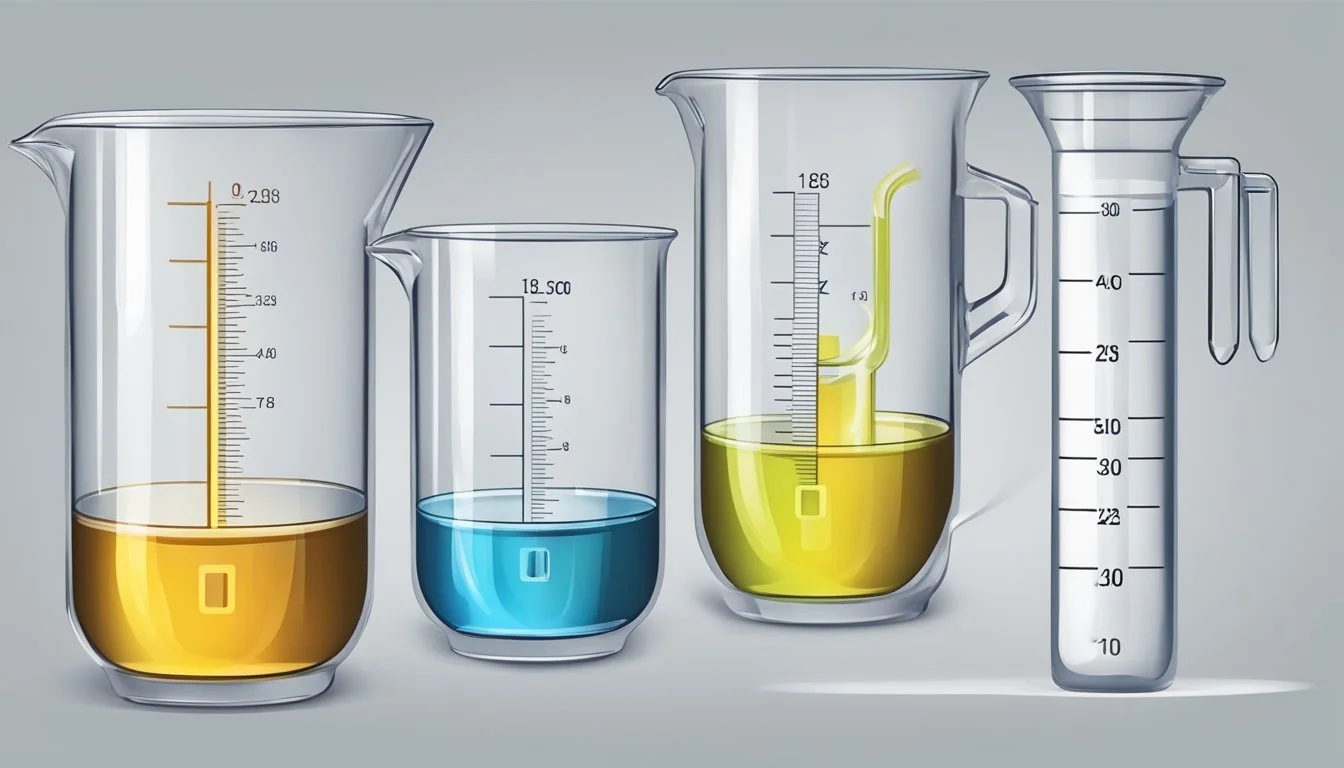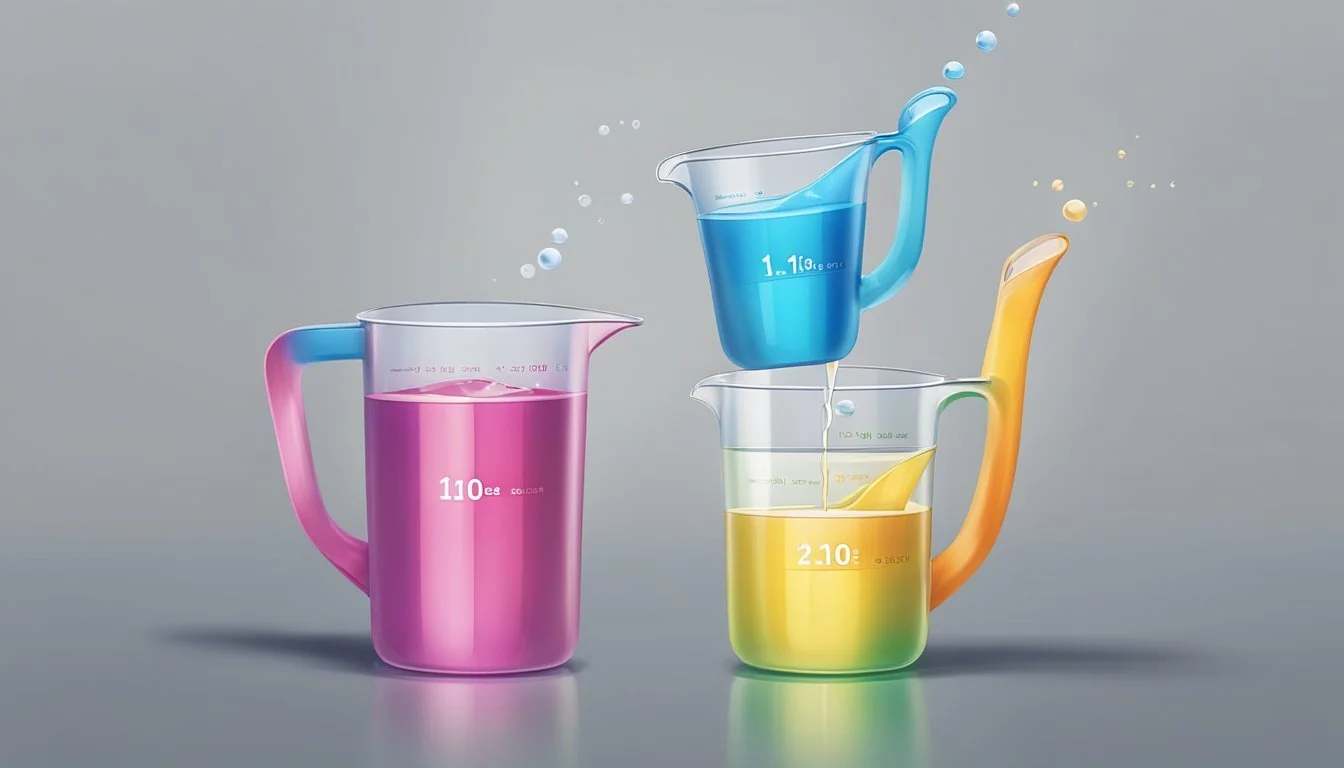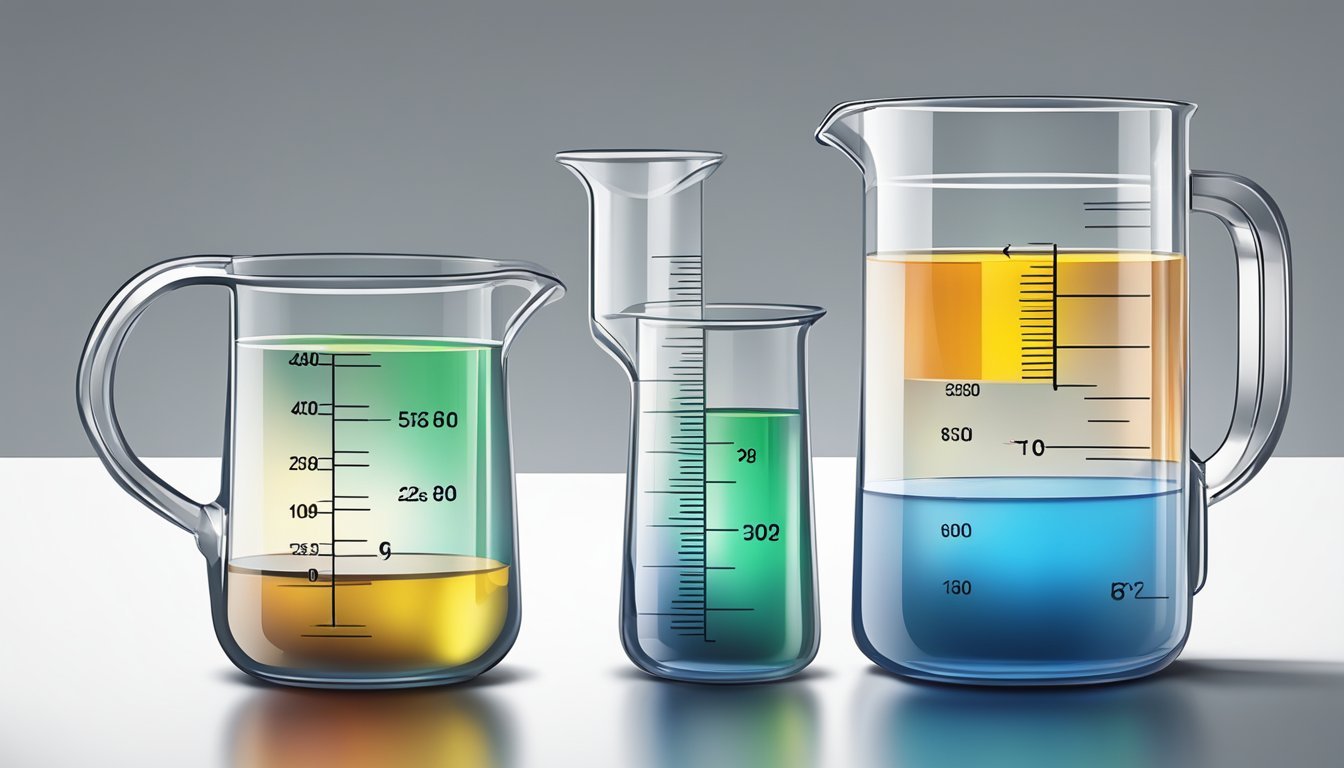How Many Fluid Ounces in a Cup?
Understanding Measurements in Cooking
Cooking and baking often require precise measurements to ensure the success of a recipe. Understanding the equivalence between different units of measurement is crucial for those who enjoy these culinary arts. One common question arises regarding volume conversion: how many fluid ounces are in a cup?
The answer lies in the standards set by the traditional US measurement system. A cup is a unit of volume commonly used in cooking to measure liquids and dry ingredients. In the United States, one cup is defined as containing eight fluid ounces. This measurement is consistent across various cooking and baking scenarios, making it a fundamental conversion for many recipes.
When working with recipes, it's essential to use the correct measurement to achieve the desired outcome. Liquid ingredients are frequently measured in fluid ounces, but dry ingredients can also be converted to cups for ease of use. This conversion ensures accuracy and consistency, whether scaling a recipe up or down or transitioning between different measurement systems.
Volume Measurement Basics
When measuring volume for cooking or baking, understanding the relationship between different units is crucial. A cup is a commonly used volume unit in cooking, especially in American recipes. One cup corresponds to 8 fluid ounces (fl oz) in the US customary measurement system. Fluid ounces are a volume unit typically used to measure liquids.
Volume can also be measured in metric units, such as milliliters (ml). A fluid ounce is approximately 29.57 ml. Therefore, a cup is around 236.58 milliliters. For larger volumes, the US system uses gallons, where 1 gallon equates to 128 fluid ounces or 16 cups.
For smaller measurements typically used in recipes, tablespoons and teaspoons are often used. In terms of fluid ounces, 1 tablespoon equals ½ fluid ounce, and 1 teaspoon equals about 1/6 fluid ounce. Here’s how these measure up in a cup:
1 cup = 16 tablespoons
1 cup = 48 teaspoons
The table below summarizes these common conversions within the US customary system:
Unit Equals Fluid Ounces 1 teaspoon - 1/6 1 tablespoon 3 teaspoons 1/2 1 cup 16 tablespoons 8 1 gallon 16 cups 128
In contrast to fluid ounces, dry ounces measure weight, not volume. A cup of one substance can have a very different weight than a cup of another, depending on the density.
Other measurement systems, such as the Imperial system used in the UK, differ slightly, for example an Imperial pint is larger than a US pint. Volume measurements often involve cubic units for three-dimensional space, such as cubic feet, but these aren’t typically used in cooking.
Being familiar with these basic measurement conversions and units is essential for precision in recipes and can be easily accomplished with the right tools and understanding.
Understanding the Cup as a Unit of Volume
The cup is a commonly used unit for measuring volume, pivotal in both cooking and nutritional labeling. Predominantly found in recipes and serving size recommendations in the United States, the cup is part of the US customary units of measurement.
A US cup measures at exactly 8 US customary fluid ounces. It is important to distinguish this from the metric cup, which is used in countries employing the metric system. The metric cup has a slightly larger capacity, measuring 250 milliliters, while a US cup converts to approximately 236.588 milliliters.
US Customary Cup Conversion:
1 US cup = 8 US customary fluid ounces
1 US cup = 236.5882365 milliliters
Moreover, it should be noted that the US legal cup, which is used for nutrition labeling, has a defined volume of exactly 240 milliliters. Neither of these should be confused with a teacup, which can vary in size but typically holds around 6 fluid ounces and is more relevant to serving sizes rather than strict measurement.
It is crucial for recipes to stick to the specified cup measurement, whether US customary or metric, to ensure accuracy in the recipe's outcome. Volume conversion between cups and fluid ounces within the same system of measurement is straightforward, but changing between US customary and metric systems will require an appropriate conversion factor.
Fluid Ounces and Conversion Fundamentals
In cooking and baking, precise measurements are crucial. Fluid ounces and cups are common units of volume used in the United States. A fluid ounce (abbreviated as fl oz) is a unit of volume typically used to measure liquids. One U.S. fluid ounce should not be confused with the Imperial fluid ounce used in the United Kingdom, as they are not equivalent.
U.S. Volume Unit Fluid Ounces 1 cup 8 fl oz 1/2 cup 4 fl oz 1/4 cup 2 fl oz
To convert fluid ounces to cups, divide the number of fluid ounces by 8. This is based on the conversion ratio where one U.S. fluid ounce is approximately 1/8 of a U.S. cup. Here's a simple conversion chart for quick reference:
2 fl oz = 1/4 cup
4 fl oz = 1/2 cup
8 fl oz = 1 cup
For those who prefer using digital tools, many online converters are available. These conversion tools require one to enter the number of ounces, and they instantly provide the equivalent in cups. It is essential to consider the context; density plays a significant role in converting dry ingredients versus liquids, as volume conversion does not account for differences in weight.
Abbreviations such as oz for ounces and c for cups are commonly used in recipes. However, while using these units, it's important to maintain consistency within a single measurement system to ensure accuracy in the recipe's intended outcome. Keeping these conversion fundamentals in mind assures precision in both casual and professional culinary endeavors.
Conversion Ratio Between Cups and Fluid Ounces
When dealing with recipes or any form of liquid measurement, it's crucial to understand the conversion ratio between cups and fluid ounces (fl oz). One cup is universally accepted to be equivalent to 8 fluid ounces. This conversion holds true for liquid measurements used in cooking and baking, where precision is key.
To convert cups to fluid ounces, one multiplies the number of cups by 8. Conversely, to convert fluid ounces to cups, one divides the number of fluid ounces by 8.
Conversion Formula:
Fluid ounces (fl oz) = cups × 8
Cups = fluid ounces (fl oz) ÷ 8
Conversion Table:
Cups (c) Fluid Ounces (fl oz) 1 8 2 16 3 24 4 32 5 40 6 48
This table and formulas allow individuals to accurately convert cups to ounces and vice versa for different volumes.
For those who prefer automated calculations, an oz to cups converter or a calculator specifically designed for this purpose can be particularly useful, but the fundamental 8 to 1 ratio remains the cornerstone of the conversion process.
Remember, this conversion applies specifically to fluid measurements, and converting dry ingredients requires a different approach due to variations in weight and density.
Practical Applications in Cooking and Baking
Understanding the conversion from fluid ounces to cups is critical for both cooking and baking, as accuracy affects the taste, texture, and appearance of dishes. In the USA, recipes often call for volumetric measurements such as cups. Consider the following conversions when working with various ingredients:
Milk, Water, and Other Liquids: 1 cup is equivalent to 8 fluid ounces.
Dry Ingredients:
Sugar and Flour: 1 cup of these ingredients is typically 4.5 dry-weight ounces, but this can vary due to the ingredient's density and how it is packed.
Butter: Often measured in tablespoons, where 1 cup equals 16 tablespoons.
These conversions prove essential when following a recipe, where precise ratios of ingredients like flour, sugar, and milk are pivotal to the final product. Some typical conversions include:
Fluid Ounces Cups Tablespoons Teaspoons 2 1/4 4 12 4 1/2 8 24 6 3/4 12 36 8 1 16 48
When measuring smaller quantities of ingredients, such as chocolate chips, it might be easier to use tablespoons or teaspoons. For instance, if a recipe requires a small quantity of chocolate chips, they measure:
1 tablespoon for sprinkling on top of a cookie dough batch
1/4 cup, or 4 tablespoons, for folding into pancake batter
Measuring cups and spoons are the cook's reliable tools, ensuring that ingredients are proportioned correctly for consistent results in cooking and baking.
How to Convert Fluid Ounces to Cups
Converting fluid ounces to cups is a straightforward process. The conversion ratio between a fluid ounce and a cup in the United States customary measurement system is critical. One US cup is equivalent to 8 US fluid ounces. Therefore, to convert fluid ounces to cups, one must divide the number of fluid ounces by 8.
Here's the formula:
cups = fluid ounces ÷ 8
To make this concept clear, consider the following examples displayed in a table:
Fluid Ounces (fl oz) Conversion (Cups) 1 1/8 5 5/8 8 1 16 2
In situations where precision is key, and an exact result is needed, this simple division offers a quick and reliable method to convert fluid ounces to cups. Volume conversion in recipes often requires such accuracy.
For those using the metric system, they should be aware that a metric cup is not equivalent to a US cup. A metric cup is defined as 250 milliliters, while a US cup is 236.5882365 milliliters. However, when it comes to converting fluid ounces to cups, this distinction is typically less relevant because fluid ounces are a different unit than milliliters.
It’s important to note that this conversion strictly applies to volume, not weight. Different substances have different weights, but for fluids akin to water, the conversion is consistent. To convert fluid ounces by weight (ounces) to cups, one would need to consider the density of the particular ingredient; that is a different calculation altogether.
In summary, to convert fluid ounces to cups, a simple division by 8 provides the results needed, ensuring that a standard US fluid ounce is used in the calculation.
Weight vs. Volume in Ingredient Measurements
When discussing measurements in cooking and baking, it's vital to distinguish between weight and volume. Weight measures the heaviness of an ingredient, typically in ounces or grams, while volume measures the space it occupies, commonly in fluid ounces, cups, or milliliters.
Understanding Weight
Weight is an absolute measure that doesn’t change regardless of the ingredient's state. A pound of flour, sugar, or butter weighs the same. Professional kitchens and recipes often use weight for precision, as it's not influenced by factors like compaction or air content.
1 ounce (weight) = 28.35 grams
16 ounces (weight) = 1 pound
Understanding Volume
Volume is a relative measure that can vary widely depending on the ingredient's density. For instance, the volume of 1 cup of feathers is lighter than 1 cup of sugar. Recipes tend to use volume measurements for liquids since they naturally fill the space of a measuring cup or spoon.
1 fluid ounce (volume) = 29.57 milliliters
1 cup (volume) = 8 fluid ounces
Volume Conversion Fluid Ounces Milliliters 1 teaspoon 1/6 fl oz 4.93 mL 1 tablespoon 1/2 fl oz 14.79 mL 1 cup 8 fl oz 236.59 mL 1 pint 16 fl oz 473.18 mL 1 quart 32 fl oz 946.35 mL
Density plays a crucial role in differentiating weight and volume. Ingredients with higher density such as honey will weigh more than those with lower density like whipped cream, even if both occupy the same volume. Therefore, the conversion between weight and volume isn't a one-to-one ratio and varies per ingredient.
For accurate ingredient measurements, particularly in baking, it is often recommended to use a kitchen scale to measure by weight. This ensures consistency and precision across batches – essential for optimal results.
Conversion Examples for Common Ingredients
When cooking or baking, precise measurements are crucial for the success of a recipe. This section provides specific conversions between cups and fluid ounces for common ingredients like milk, flour, sugar, and butter. These conversions will help ensure accuracy in ingredient measurements.
Converting Volume of Milk
Milk is commonly measured in fluid volume. The conversion between cups and fluid ounces for milk is straightforward:
1 cup of milk = 8 fluid ounces
½ cup of milk = 4 fluid ounces
Using these conversions ensures that the liquid content in recipes remains consistent.
Converting Weight of Flour to Volume
When measuring flour, weight-to-volume conversion is often required since flour is typically sold by weight:
1 cup of all-purpose flour weighs approximately 4.25 ounces
However, flour should be spooned and leveled rather than scooped to avoid packing, which can lead to using more flour than needed.
Converting Volume of Sugar
Sugar, like milk, is converted based on fluid volume if the recipe requires such precision. Granulated sugar conversions are as follows:
1 cup of granulated sugar = 7.1 ounces
½ cup of granulated sugar = 3.55 ounces
This helps in achieving the desired sweetness and texture in recipes.
Converting Volume of Butter
Butter is often used in both baking and cooking and can be measured in tablespoons, cups, or ounces. For conversion:
1 cup of butter = 8 ounces (or 16 tablespoons)
These measurements are particularly important for consistent results in baking where the correct fat ratio is key.
Using Conversion Tools and Tables
For those in need of a quick and reliable method to convert fluid ounces to cups, various tools and tables are readily available. Conversion tools, such as online calculators, allow users to enter a value in ounces and instantly receive the equivalent in cups. These tools are particularly useful when precision is required for recipes or measuring liquids for any purpose.
Let's consider that 1 cup equals 8 fluid ounces. Using this knowledge, one can employ a conversion table that outlines various conversions. For instance, the following table lists conversions from cups to fluid ounces:
Cups Fluid Ounces 1 8 1/2 4 1/3 2.67 1/4 2 1/8 1
To convert cups to ounces, one simply multiplies the number of cups by 8. Conversely, to find out how many cups are in a certain number of fluid ounces, one would divide the number of ounces by 8.
It's valuable to note that the conversion varies slightly if one deals with dry ingredients or if using the Imperial system. However, for liquid conversions, sticking to the standard US measurements with the 1 cup to 8 fluid ounces rule holds true.
Moreover, some converters offer additional functionalities, like converting to and from tablespoons or teaspoons. Since there are 2 tablespoons in a fluid ounce and 3 teaspoons in a tablespoon, understanding these relationships further aids in the conversion process. Hence, a comprehensive converter can handle a variety of measurements, serving as a one-stop solution for kitchen measurement conversions.
Other Volume Units and Their Conversions
When discussing volume conversions, it's imperative to understand that there are several units used to measure volume across different systems of measurement. The metric system uses units such as the liter (L) and the milliliter (mL), where one metric cup is defined as 250 milliliters. On the other hand, the imperial system primarily utilizes the imperial gallon and the imperial fluid ounce.
Metric to U.S. Customary Units:
1 liter is equivalent to 33.814 U.S. fluid ounces.
1 milliliter is equivalent to 0.033814 U.S. fluid ounces.
U.S. Customary Units:
1 U.S. gallon is equal to 128 U.S. fluid ounces.
1 U.S. pint is equal to 16 U.S. fluid ounces.
1 U.S. cup is equal to 8 U.S. fluid ounces.
The table below illustrates conversions between different volume units:
Volume Unit Equivalent in Milliliters (mL) Equivalent in U.S. Fluid Ounces 1 Metric Cup 250 mL 8.454 U.S. Fluid Ounces 1 U.S. Gallon 3,785 mL 128 U.S. Fluid Ounces 1 Imperial Gallon 4,546 mL 160 Imperial Fluid Ounces
In nonliquid volumes, cubic measurements are a common alternative. For example:
1 cubic foot is equal to approximately 7.48 U.S. gallons.
1 cubic inch is equal to approximately 0.554 U.S. fluid ounces.
It is crucial for those working with different volume units, such as in cooking or engineering, to understand these conversions to ensure accuracy in their measurements.





